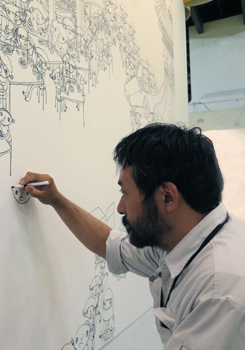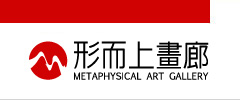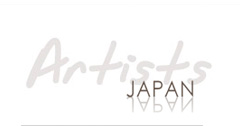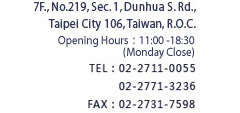|
 |
|
| |
 |
 |
 |
| |
Shintaro Miyake created many lovely characters as the main roles in different series of artworks, the best known being Sweet-san and Fluffy. Sweet-san has thin and long limbs, triangle little faces and pointed ears. It sometimes lies on the beach, sometimes climbs mountains, and sometimes disguises itself as a samurai or geisha, playing naively around the world in huge images of stories. Fluffy is a figure of cloud sustained by balloons with a huge head and long drooping ears like bunny. Large strokes innocently made recognizable characters, and not only Sweet-san who often trades outfits at each appearance, its accompaniment such as a Minotauro, a commando all become his special sign. During a three day exhibition at Boston in 2006, Shintaro Miyake wore a beaver doll suite made by himself and drew on a 30 feet wall dressed. At the Basel Art Fair in 2008, Shintaro Miyake followed the same principles and performed tea ceremony as a disguised giant octopus.
Overall, Shintaro Miyake’s artworks are the combination of cosplayed public performance of improvisation interacting with himself as a living sculpture, plus |
|
 |
| |
|
derivative works from figures of characters. This complex becomes a complete set of method to tell stories and to promote. Therefore Shintaro Miyake is categorized in Japanese “Neopop”, following the reverent trend with Takashi Murakami, Yoshitomo Nara who create colorful imaginary figures similar to cartoon books or children’s toys with naïve-looking wide-eyed figures expressing the merge of Animamix aesthetics and commercial popularity. At the first glance we might consider Mr. Miyake’s approach are recreational, simple, common, fantastic and easy resonated, even aesthetically pleasing. In fact if looking closely, its content surpasses the simple cuteness and innocence. The cultural thinkings he tries to insert usually makes the images significant and sophisticatedly narrates his social and historical mental roaming, furthermore to the understanding of life philosophy.
Mr. Miyake’s inspiration did not originate simply from the animation, but also minimal art from Western, especially Austrian artists from the Gugging such as Oswald Tschirtner and Johann Hauser. He mentioned that during the earlier time in university when looking for his self-style, he felt not only confused but even also unsure to continue creating without strong technique. At the same time he found the book “Raw Creation: Outsider Art and Beyond” about Austrian Gugging artists. He was deeply touched and then confirmed it as the future developing direction.
Austrian Gugging artists originated from the activity of artistic treatment Dr. Leo Navratil held in late 1950 in Maria Gugging Psychiatric Clinic at Gugging, suburban of Vienna. The doctor analyzed works by patients and discovered many of them very artistically talented, therefore produced them into albums. The publication of “Schizophrenie und Kunst” in 1965 raised many Viennese artists’ interest and their visit to Gugging. Therefore it became the gathering place of talented patients. In 1970 the first exhibition of the "Gugging Artists" took place in Vienna. These artworks were called Art Brut (Outsider Art), among them the rather famous artists included Johann Fischer, Johann Garber, Johann Hauser, Oswald Tschirtner and others.
Mr. Miyake’s creation stands on different departure with Gugging artists, however the idea of concerning art as a part of mental treatment, and their simple, inner-derived, and somewhat nervous artworks appear to him specially attractive and reflect him emotionally. When talking about this experience he said, “Artists need skill, but I do not. This is a better way for me, meaning that using very simple tools is good for me. Skills are not as important as the issue of concepts”. However obviously, Mr. Miyake’s “needlessness of technique” is not equal to the abandon of structure, but the choice of being pure and inner-pointing with awareness as the personal style. From this aspect we could easily realized that, Mr. Miyake’s created characters in the paintings from different stages in fact double function as projection and transference – a projection and camouflage of himself hidden in the paintings as the figures, and a description of Utopia, reflecting his observation to this society of mortal beings.
Lee Wei-Jing
|
|
| |
|
| |
|
 |
|
| 1970 |
Born in Tokyo, Japan |
| 1996 |
B.A., Tama Art University, Tokyo, Japan |
| |
|
| Solo Exhibition
- |
| 2012 |
"A COMMONPLACE TALE", Metaphysical Art Gallery, Taipei, Taiwan |
| 2011 |
"CALM CLAM" GALERIE GABRIEL ROLT, Amsterdam, the Netherlands
"IT AIN'T NOTHING BUT THE LIFE", Tomio Koyama Gallery, Kyoto, Japan |
| 2009 |
"There are TWO TRUTHS!", c/o Gerhardsen Gerner, Berlin, Germany |
| 2008 |
"Egypt -Path to Civilization", Tomio Koyama Gallery, Tokyo, Japan |
| 2007 |
"Maybe it's a bright side of life", Takahashi Collection, Tokyo, Japan
"Innocy's House", Museum Gugging, Art/Brut Center Gugging, Vienna, Austria
"HATCHOBORI", Galerie Krinzinger, Vienna, Austria |
| 2006 |
"Beaver no Seikatsu", Sandra and David Bakalar Gallery, Massachusetts College of Art,Boston, MA, USA
"NI-MARU-MARU-ROKU, in DOITSU", c/o Atle Gerhardsen, Berlin, Germany |
| 2005 |
"ATSUMORI", Tomio Koyama Gallery, Tokyo, Japan |
| 2004 |
"Minotauro contro Mostro Marino", Galleria Suzy Shammah, Milan, Italy
"Innocy's House", Krinzinger Projekte, Vienna, Austria
"The Fourth Planet Hour", c/o Atle Gerhardsen, Berlin, Germany |
| 2003 |
"SWEET SUMMER", Tomio Koyama Gallery, Tokyo, Japan |
| 2002 |
"Shulascaux no Hekiga (Wall Painting of Shulascaux)", Gallery Kaku, Tokyo, Japan |
| 2001 |
"Japan Garden Fuji Girl - FUJI-SIDE", Setagaya Gallery Umegaoka, Tokyo, Japan
"Japan Garden Fuji Girl - GIRL-SIDE", Za GALLERY Ariake, Tokyo, Japan |
| 2000 |
"SWEET-SAN", Setagaya Gallery Umegaoka, Tokyo, Japan |
| 1999 |
"Forever Mama-san", Kobo Ginza, Tokyo, Japan |
| 1998 |
Kobo Ginza, Tokyo, Japan |
| |
|
| Group Exhibition
- |
| 2010 |
"Hito Hito", Bambinart Gallery, Tokyo, Japan |
| 2009 |
"Detour, Moleskine travelling exhibition", MoMA Design Store, Tokyo, Japan
"NO MAN'S LAND", Ambassade de France, Tokyo, Japan |
| 2008 |
"JEKYLL ISLAND", Honor Fraser, Los Angel, CA, USA
"neoteny japan: Contemporary Artists after 1990s from Takahashi Collection", KIRISHIMA
OPEN-AIR MUSEUM, Kagoshima, Japan
(touring Sapporo Art Park, Hokkaido, Japan, 2008-09 / The Niigata Prefectural
Museum of Modern Art, Niigata, Japan 2009 / Akita Museum of Modern Art, Akita, Japan
2009 / Yonago City Museum of Art, Tottori, Japan 2009-2010 / The Museum of Art
EHIME, Ehime, Japan 2010)
Richard Heller Gallery, Santa Monica, California, USA |
| 2007 |
"3L4D - 3rd Life 4th Dimension", Metaphysical Art Gallery, Taipei, Taiwan
"DETOUR. The Moleskine City Notebook Experience", Art Directors' Club, New York, USA |
| 2006 |
"Berlin - Tokyo / Tokyo - Berlin", Neue Nationalgalerie, Berlin, Germany
"NAOSHIMA STANDARD", Former Barber, Naoshima, Kagawa, Japan |
| 2005 |
"Mixed-Up Childhood", Auckland Art Gallery, Auckland, New Zealand
"JaPan PoP", Museum Tennis Palace, Helsinki City Art Museum, Helsinki, Finland |
| 2004 |
"Officina Asia", Galleria d'arte Moderna di Bologna, Bologna, Italy
"Fiction.Love - Ultra New Vision in Contemporary Art", Museum of Contemporary Art, Taipei, Taiwan |
| 2003 |
"Mr. VS. Shintaro Miyake Exhibition", NADiff, Tokyo, Japan
"Opening Exhibition", Tomio Koyama Gallery (Shinkawa), Tokyo, Japan
"HOPE - do hope for the future", Laforet Museum Harajuku, Tokyo, Japan
"The Japanese Experience - Inevitable", Museum der Moderne Salzburg, Salzburg, Austria |
| 2002 |
"GEISAI-1", Tokyo Tower Amusement Hall, Tokyo, Japan
"The Japanese Experience - Inevitable", Ursula Blickle Stiftung, Kraichtal, Germany
(touring Museum der Moderna Salzburg, Salzburg, Austria, 2003)
"GEISAI-2", Tokyo Big Site, Tokyo, Japan
"Emotional Site", Saga-cho Shokuryo Building, Tokyo, Japan |
| 2001 |
"Design Festa", Tokyo Big Site, Tokyo, Japan |
| 1994 |
"URBANART #3", PARCO Gallery Shibuya, Tokyo, Japan |
| 1993 |
"URBANART #2", PARCO Gallery Shibuya, Tokyo, Japan |
| |
|
|
|
|
| |
|
|







